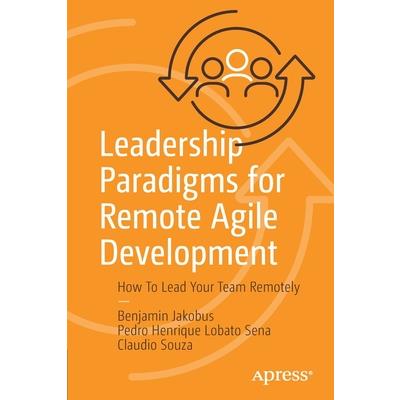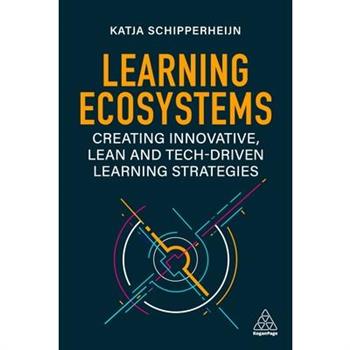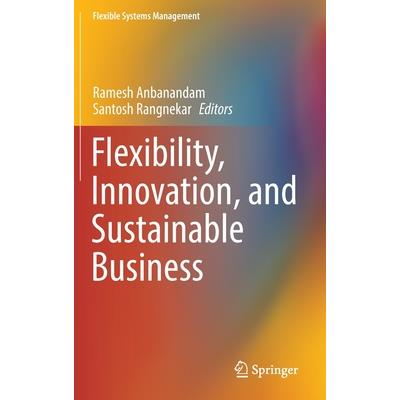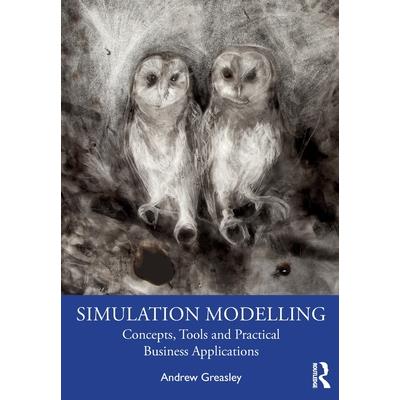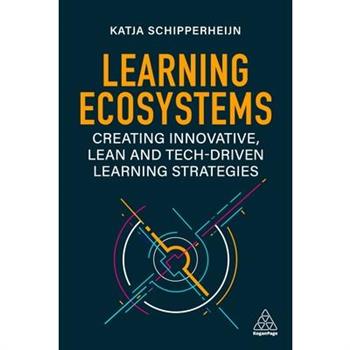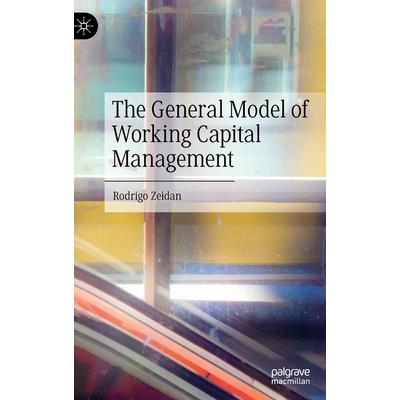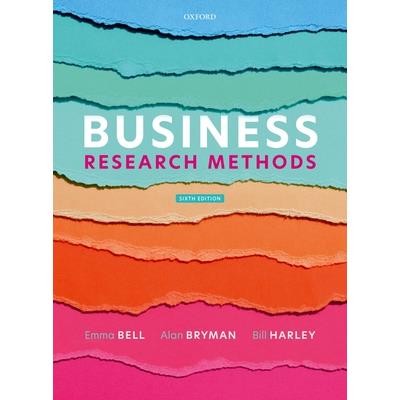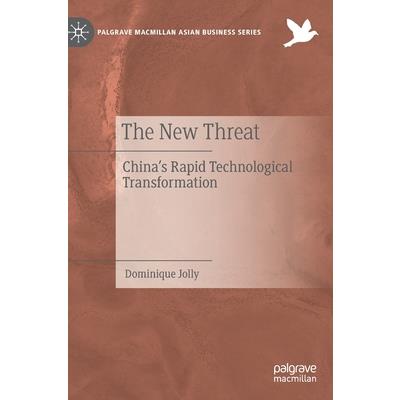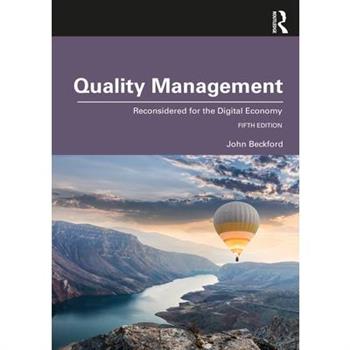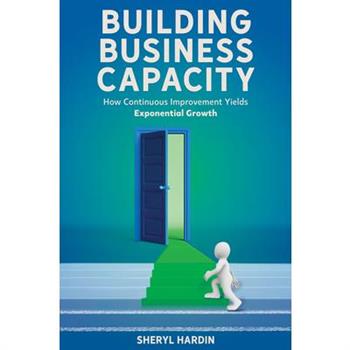Management by Business Process
This textbook presents an integrated view of three themes relevant to the operationalization of Management by Business Process (M-B-BP): people, process, and technology. Whereas most Business Process Management (BPM) textbooks focus on software technology issues and ontological standards for the integration of various software layers, this book focuses on the managerial perspective, managerial decisions regarding the configurations of the company's structural variables that are most favorable to the best operationalization and evolution of the M-B-BP approach. Among the structural variables of the scope of managerial choices that support the discussion are: work specialization, work grouping, the chain of command, the extent of control, the decision process, and work formalization. To support businesses managed through an organizational structure oriented by business processes, it is essential that the manager has a set of knowledge, technical skills, and professional demeanor. This text focuses on these aspects, presenting: a) the theoretical foundation, describing the central concepts of the M-B-BP approach; b) the set of necessary techniques from different areas, describing and exemplifying those skills; and c) the required behaviors of managers and employees for structuring, operation, management, and continuous improvement of the organization's business processes. For students of M-B-BP, there are examples and cases that discuss business situations and themes to aid in grasping the material while at the end of the chapters there are reflection questions as well as lists of complementary material (articles, videos, web sites). They will gain an understanding of how to create a culture of improvement. The English translation of this book from its Portuguese original manuscript was done with the help of artificial intelligence (machine translation by the service provider DeepL.com). A subsequent human revision of the content was done by the author.
Digital Government
Digitization, the global networking of individuals and organizations, and the transition from an industrial to an information society are key reasons for the importance of digital government. In particular, the enormous influence of the Internet as a global networking and communication system affects the performance of public services.This textbook introduces the concept of digital government as well as digital management and provides helpful insights and strategic advice for the successful implementation and maintenance of digital government systems.
Advanced Digital Auditing
This open access book discusses the most modern approach to auditing complex digital systems and technologies. It combines proven auditing approaches, advanced programming techniques and complex application areas, and covers the latest findings on theory and practice in this rapidly developing field. Especially for those who want to learn more about novel approaches to testing complex information systems and related technologies, such as blockchain and self-learning systems, the book will be a valuable resource. It is aimed at students and practitioners who are interested in contemporary technology and managerial implications.
Lean Management, Kaizen, Kata and Keiretsu
Chapter 1: Lean Management: Introduction.- Chapter 2: Kaizen, Kaikaku and Innovation Management.- Chapter 3: Kata - Behavioural Transformation towards Lean Management.- Chapter 4: Keiretsu Networks.- Chapter 5: Kyouiku - The Learning Enterprise.- Chapter 6: Policy Deployment and Hoshin Kanri Strategy.- Chapter 7: Toyota Production System.- Chapter 8: 5S Concept: Muda, Muri and Mura.- Chapter 9: Change (Henkou Kanri) as integral Part of Lean Management.- Chapter 10: Industry 4.0 and Artificial Intelligence (AI) in Lean Management.- Chapter 11: Digital transformation is shaping business transformation.- Chapter 12: Lean Management in Aviation.- Chapter 13: Lean Management in the Automotive Industry.- Chapter 14: Lean Management in the Construction Industry.- Chapter 15: Lean Management in the Railway Industry.- Chapter 16: Lean Management in Healthcare and Hospitals.- Chapter 17: Lean Management in Higher Education (LHE).- Chapter 18: Lean Management in Project Management.- Chapter 19: Lean Management Tools.- Chapter 20: Lean Management Outlook 2030.- Glossary.
The New Era of Real Estate
This book is intended to guide researchers interested in the world of innovation in real estate finance linked to technology and provide new evidence on classifying and evaluating the performance of PropTech companies. Chapters will deal with the evolution of PropTech, possible business models, negotiation and property management tools, new property financing tools (p2p lending and crowdfunding), the market and the balance sheet analysis of PropTech companies in Europe.A valuable resource for researchers studying the real estate industry, this book is also relevant to those studying FinTech and the impact of technology on industry more broadly. It can also be of use to professionals in the real estate industry, looking for a cutting edge research-based study on PropTech.
Data-Driven Retailing
This book provides retail managers with a practical guide to using data. It covers three topics that are key areas of innovation for retailers: Algorithmic Marketing, Logistics, and Pricing. Use cases from these areas are presented and discussed in a conceptual and comprehensive manner. Retail managers will learn how data analysis can be used to optimize pricing, customer loyalty and logistics without complex algorithms.The goal of the book is to help managers ask the right questions during a project, which will put them on the path to making the right decisions. It is thus aimed at practitioners who want to use advanced techniques to optimize their retail organization.
The Handbook of Global Outsourcing and Offshoring
Global sourcing is a complex area, and one that managers must get to grips with as business investment in outsourcing continues to climb. This book provides invaluable guidance for the reader, walking them through the fundamentals of global sourcing to very recent trends, including intelligent automation, cloud services and crowdsourcing. Replete with key examples and cases, it allows students and managers alike to relate academic theory to practice, acting as a roadmap to a rapidly evolving field.For the last decade, the authors have studied the full spectrum of activities involved in global sourcing from both client, supplier and advisory viewpoints. Their research has shown that while more firms engage in global sourcing activities, many of them are still struggling to extract value from sourcing relationships. While past research has produced numerous practical frameworks regarding the management of global sourcing of services, little of this insight has been put into practice. This book addresses such shortcomings by exploring the impact of theory on practice. It is important reading for any academic, student or practitioner concerned with global sourcing either from the client or supplier perspective.
Innovative Supplier Management
Globalization, digitization, global supply chains and the Corona pandemic have led companies to take a closer look at value chains. Shifting services to partially competing supplier networks is giving rise to new guiding principles, strategies and processes. The focus in the future has therefore long since shifted from leveraging internal cost advantages to information exchange, stable supply chains and the exploitation of global cross-company potential.This book uses innovative, digital and strategic examples to show how successful supplier management must function and act.
Leadership Paradigms for Remote Agile Development
If you are asking yourself Why are my engineers unable to deliver?, Why are so many engineers leaving? or Why is our software riddled with bugs?, then you've come to the right place. This book acts as a concise, practical guide on how to lead successful agile projects in a remote environment. The authors draw from industry experience and a wide range of fields and disciplines--from software engineering to criminology and sociology--to teach you how to maintain technical oversight, manage deadlines, and calibrate expectations, while also creating and maintaining a healthy remote work environment. You will gain both practical tips grounded in reality, while learning why such tips work by navigating the background on which they are founded--from Broken Window Theory, Labeling Theory to the Dunning-Kruger Effect. Leadership Paradigms for Remote Agile Development will show you how to avoid the most common mistakes and pitfalls that cause engineering projects to fail while at the same time maintaining high ethical standards. What You'll LearnManage feedback, reduce bureaucracy, create and adapt processes Understand what to look for in new hiresCarve out a solid road to success for any type of software projectWho This Book Is ForAnyone who is in, or wishes to move into, an IT leadership position, such as senior software engineers, founders, engineering managers, or team/tech leads.
Auto-Grader - Auto-Grading Free Text Answers
Teachers spend a great amount of time grading free text answer type questions. To encounter this challenge an auto-grader system is proposed. The thesis illustrates that the auto-grader can be approached with simple, recurrent, and Transformer-based neural networks. Hereby, the Transformer-based models has the best performance. It is further demonstrated that geometric representation of question-answer pairs is a worthwhile strategy for an auto-grader. Finally, it is indicated that while the auto-grader could potentially assist teachers in saving time with grading, it is not yet on a level to fully replace teachers for this task.
Hardcover Monthly Planner Mountain Theme
5.5 x 8.5 (13.97cm x 20.32cm)Perfect Hard Cover planner that you can fill in the blank and organize your life your way with dates, notes, goals, plans, ideas and thoughts.Bonus pages for extra notes, to-do, shopping or grocery lists.Simple pages with a matte cover finish.Great self help solution to help yourself get in order and in a positive direction.
Vulnerability Management
Vulnerability management (VM) has been around for millennia. Cities, tribes, nations, and corporations have all employed its principles. The operational and engineering successes of any organization depend on the ability to identify and remediate a vulnerability that a would-be attacker might seek to exploit. What were once small communities became castles. Cities had fortifications and advanced warning systems. All such measures were the result of a group recognizing their vulnerabilities and addressing them in different ways. Today, we identify vulnerabilities in our software systems, infrastructure, and enterprise strategies. Those vulnerabilities are addressed through various and often creative means.Vulnerability Management demonstrates a proactive approach to the discipline. Illustrated with examples drawn from Park Foreman's more than three decades of multinational experience, the book demonstrates how much easier it is to manage potential weaknesses than to clean up after a violation. Covering the diverse realms that CISOs need to know and the specifics applicable to singular areas of departmental responsibility, he provides both the strategic vision and action steps needed to prevent the exploitation of IT security gaps, especially those that are inherent in a larger organization. Completely updated, the second edition provides a fundamental understanding of technology risks--including a new chapter on cloud vulnerabilities and risk management--from an interloper's perspective.This book is a guide for security practitioners, security or network engineers, security officers, and CIOs seeking understanding of VM and its role in the organization. To serve various audiences, it covers significant areas of VM. Chapters on technology provide executives with a high-level perspective of what is involved. Other chapters on process and strategy, although serving the executive well, provide engineers and security managers with perspective on the role of VM technology and processes in the success of the enterprise.
Forecasting Next Generation Manufacturing
How Digital Shadows, New Forms of Human-Machine Collaboration, and Data-Driven Business Models Are Driving the Future of Industry 4.0: A Delphi Study.- Applying the Real-Time Delphi Method to Next Generation Manufacturing.- Big Picture of Next Generation Manufacturing.- Governance Structures in Next Generation Manufacturing.- Organization Routines in Next Generation Manufacturing.- Capability Configuration in Next Generation Manufacturing.- Interface Design in Next Generation Manufacturing.- Resilience Drivers in Next Generation Manufacturing.- Future Scenarios and the Most Probable Future for Next Generation Manufacturing.- Hybrid Intelligence in Next Generation Manufacturing: An Outlook on New Forms of Collaboration Between Human and Algorithmic Decision-Makers in the Factory of the Future.
Global Supply Chains in a Glocal World
Growing global trade flows and integration has led to continuous and accelerating changes to our global supply chains over the past decades. Recent macroeconomic events, new technological developments, and most notably Covid-19, are envisioned to push global supply chains in further transforming and adapting. How will companies look into issues of resilience, security, and digitalisation in their supply chains and operations?Global Supply Chains in a Glocal World aims to answer these mission-critical questions via a series of articles contributed by academics and senior management covering different industry sectors such as healthcare, food, e-commerce, textiles, mobility, and FMCG, as well as geographical, risk management, and technological perspectives. Proffering varied views of what has happened during the Covid years and what it means for the future, this book provides academics and practitioners a valuable resource when they navigate their next steps in an increasingly turbulent world.
Learning Ecosystems
Building and sustaining an organization which is nimble, adaptable, resilient and future proof is both complex and urgent. Only those with flexible and innovative Learnscapes will succeed. Learning Ecosystems explains how organizations evolve into LearnScapes where learning techniques are aligned with continuous interaction with the ecosystem they are part of. It explains how to upskill and reskill a workforce continuously in an increasingly collaborative and tech-enabled world. Full of practical guidance and strategic advice, this book covers how to take a lifelong approach to learning in the organization and the core competencies needed for this. It explains what to do when building a value and data-driven learning strategy and discusses the symbiosis of people and technology. This book explores lean learning, data analytics, learning technologies including artificial intelligence (AI) and the ethics of using these technologies. There is also crucial guidance on how to take a human-centric approach to innovation. Learning Ecosystems demonstrates the value of continuous improvement and offers techniques for a variety of situations including problem analyses, experimentation and algorithmic business thinking. Most importantly, it provides guidance on how to build a learning culture and a learning ecosystem throughout the company. Supported by case studies from companies including Etihad Airways, ING, ESF and FEDEX, this is essential reading from a leading learning innovator who has helped global organizations to rethink their learning strategies to achieve sustained business growth.
Flexibility, Innovation, and Sustainable Business
This book contains practical experiences, knowledge, and insights in the evolution, formulation, and implementation of strategies and models for flexibility, innovation, and sustainable business. The book discussed the increasing significance of a flexible approach by businesses as much as possible in every area of their work--from employment policies to supply chain management (SCM). It further links this flexible approach to a sustainability strategy, which is necessary to be competitive today and in the future. This business approach is necessary to create long-term value by considering how a given organization operates in the ecological, social, and economic environment. This is linked to the next theme of the book--innovation--which is fundamental for a business to improve its processes, develop new and improved products and services for the market, increase its efficiency, and, most importantly, get better profitability. The book also delves into another buzz word in business--analytics. Companies have widely embraced the use of analytics to streamline operations and improve processes. The book explores all these critical emerging areas through the chapters in its five sections and is invaluable for management students and researchers, practicing business managers, consultants, professional institutions, and government and corporate organizations.
Managing Innovation in Organisations
1. Managing innovation.- 2. Types of innovation and innovation failure.- 3. Innovation ecosystems.- 4. Responsible innovation.- 5. Entrepreneurial innovation.- 6. Resilience and innovation.- 7. Green and eco-innovation.- 8. Artificial intelligence and innovation.- 9. Innovation trends.
Simulation Modelling
While simulation has a vast area of application, this textbook focuses on the use of simulation to analyse business processes. It provides an up-to-date coverage of all stages of the discrete-event simulation (DES) process, covering important areas such as conceptual modelling, modelling input data, verification and validation and simulation output analysis. The book is comprehensive yet uncomplicated, covering the theoretical aspects of the subject and the practical elements of a typical simulation project, demonstrated by cases, examples and exercises. It also shows how simulation relates to new developments in machine learning, big data analytics and conceptual modelling techniques. Guidance is provided on how to build DES models using the Arena, Simio and Simul8 simulation software, and tutorials for using the software are incorporated throughout. Simulation Modelling offers a uniquely practical and end-to-end overview of the subject, which makes it perfect required or recommended reading for advanced undergraduate and postgraduate students studying business simulation and simulation modelling as part of operations research, business analytics, supply chain management and computer science courses.
Computers On The Farm
NEW PRINT WITH PROFESSIONAL TYPE-SET IN CONTRAST TO SCANNED PRINTS OFFERED BY OTHERS Computers On The Farm: Farm Uses For Computers, How To Select Software And Hardware, And Online Information Sources In Agriculture This book is a result of an effort made by us towards making a contribution to the preservation and repair of original classic literature. In an attempt to preserve, improve and recreate the original content, we have worked towards: 1. Type-setting & Reformatting: The complete work has been re-designed via professional layout, formatting and type-setting tools to re-create the same edition with rich typography, graphics, high quality images, and table elements, giving our readers the feel of holding a 'fresh and newly' reprinted and/or revised edition, as opposed to other scanned & printed (Optical Character Recognition - OCR) reproductions. 2. Correction of imperfections: As the work was re-created from the scratch, therefore, it was vetted to rectify certain conventional norms with regard to typographical mistakes, hyphenations, punctuations, blurred images, missing content/pages, and/or other related subject matters, upon our consideration. Every attempt was made to rectify the imperfections related to omitted constructs in the original edition via other references. However, a few of such imperfections which could not be rectified due to intentional\unintentional omission of content in the original edition, were inherited and preserved from the original work to maintain the authenticity and construct, relevant to the work. We believe that this work holds historical, cultural and/or intellectual importance in the literary works community, therefore despite the oddities, we accounted the work for print as a part of our continuing effort towards preservation of literary work and our contribution towards the development of the society as a whole, driven by our beliefs. We are grateful to our readers for putting their faith in us and accepting our imperfections with regard to preservation of the historical content. HAPPY READING!
Learning Ecosystems
SHORTLISTED: Business Book Awards 2023 - International Business BookBuilding and sustaining an organization which is nimble, adaptable, resilient and future proof is both complex and urgent. Only those with flexible and innovative Learnscapes will succeed. Learning Ecosystems explains how organizations evolve into LearnScapes where learning techniques are aligned with continuous interaction with the ecosystem they are part of. It explains how to upskill and reskill a workforce continuously in an increasingly collaborative and tech-enabled world. Full of practical guidance and strategic advice, this book covers how to take a lifelong approach to learning in the organization and the core competencies needed for this. It explains what to do when building a value and data-driven learning strategy and discusses the symbiosis of people and technology. This book explores lean learning, data analytics, learning technologies including artificial intelligence (AI) and the ethics of using these technologies. There is also crucial guidance on how to take a human-centric approach to innovation. Learning Ecosystems demonstrates the value of continuous improvement and offers techniques for a variety of situations including problem analyses, experimentation and algorithmic business thinking. Most importantly, it provides guidance on how to build a learning culture and a learning ecosystem throughout the company. Supported by case studies from companies including Etihad Airways, ING, ESF and FEDEX, this is essential reading from a leading learning innovator who has helped global organizations to rethink their learning strategies to achieve sustained business growth.
Marx in Management and Organisation Studies
This book introduces new approaches that deploy concepts from Marx's critique of political economy to renew the study of labour, value and social antagonisms in the broad area of management and organisation studies. Exploring established and emergent strands of Marxian theorising inside and outside management and organisation studies, it delves into, beyond and behind the 'hidden abode' of production to examine a range of issues including: the relationship between the workplace and the market; the relationship between conflicts at work and wider social and political movements; the role of class, gender and race in capitalist society; and the interconnection of work and labour with the environmental crisis. The book will be of interest for academics, postgraduate students and researchers interested in radical perspectives on work, organisation and economic life. Representing both a critical introduction to existing theories and a theoretical contribution to the development of the field of study in its own right, it condenses challenging ideas into a short, readable volume without losing their complexity or sophistication.
Urban Sustainability
This textbook provides an innovative pedagogy to students who will be the policy makers of tomorrow. It provides thoughts on sustainability and the complexity among its different dimensions. It guides students through experience, processes of complex decision making, and sharpen their clarity of thought, to enhance their communication abilities and help them develop critical thinking. It provides key competencies to address the complexities of sustainable development.By combining game-based learning with an analytical style of education, supplemental materials are provided to make the definitions of various sustainability aspects more concrete and allows students to experiment in a consequence-free environment, with scenario examples. Board Game and a hypothetical management course, dealing with various topics like transportation sustainability, societal metabolism, etc. as well as with decision making under those contexts, will formalize the mathematics neededto make robust decisions.
The Art and Science of Demand and Supply Chain Planning in Today’s Complex Global Economy
Essentially, this book will offer the reader a chance to fully understand the interconnected set of processes in a "best practice" application. Furthermore, examples and cases will be used to illustrate its practical application in today's complex Global Supply Chain.
The General Model of Working Capital Management
This book integrates Working Capital Management, Trade Credit, and Supply-Chain Finance in a comprehensive framework, illustrated by dozens of case studies, including a leading case which explains how improved working capital practices have led to over U$1 billion in savings for a large company. The General Model of Working Capital Management consolidates the aspects of these subjects spread across different disciplines, such as finance, accounting, operations, marketing, and more. It includes enough material to make the book accessible to a broad audience, from introductory undergraduate courses to business executives. Offering managerial lessons to optimize companies' cash flow, case studies run the whole gamut, from the small business owner who cried in an executive class when realizing how bad working capital management almost destroyed his business to the significance of Amazon's and Tesco's negative cash conversion cycle for their expansion. Formal models include the relationship between market power and value extraction through changes in payment terms for consumers and suppliers, in-kind finance, and trade credit with asymmetric competing retailers. The book also explores how just-in-time strategies developed under capital constraints to limit working capital investments; they are more than the search for production efficiency. Finally, the chapter about the greening of supply chains describes how companies that can extract resources from their supply chain or act as trade credit lenders have a crucial role in mitigating climate change.
Business Research Methods 6th Edition
This extremely popular text is the complete introduction to doing business research and is the ideal guide for students embarking on a research project. The authors have extensively revised this sixth edition to make it the most engaging and relevant text available. New chapters on quantitative methods and visual research offer extensive coverage of these areas and even greater practical support in applying these techniques, while cutting-edge material on inclusivity and bias in research, feminist perspectives, and decolonial and indigenous research is also introduced. 'Student experience' features provide practical tips, presenting personal insights and advice from fellow students to help you avoid common mistakes and follow others' successful strategies when undertaking your own research project. For the sixth edition, the 'Research in Focus' features provide a greater global range of examples, including new case studies from China, Denmark, Germany, Spain, and India, all of which demonstrate how fascinating and essential research can be. Above all else, the book places strong emphasis on those challenges faced most frequently by students, such as choosing a research question, planning a project, and writing it up. Presenting essential topics in a concise way, iBusiness Research Methods/i will provide you with key information without becoming overwhelming: it is now even clearer, more focused, and more relevant than ever before. The e-book offers a mobile experience and convenient access: www.oxfordtextbooks.co.uk/ebooks This book is accompanied by the following online resources: iFor students/iVideo tutorials covering SPSS, Nvivo, R, and Stata.Self-test multiple choice questions with answer feedbackResearch project guideVideo interviews with students and lecturersLinks to additional resources (articles, data repositories, and third-party guides)Guide to using Excel in data analysisFlashcard glossary iFor lecturers/iPowerPoint presentationsAdditional case studiesDiscussion questionsLecturer's guide (includes suggested lecture outlines, problem-spotting, and practical teaching tips)Test bank containing multiple choice questions Figures from the text
Application of Linear Programming to the Theory of the Firm
This title is a detailed academic monograph that explores the use of linear and non-linear programming in economic theory, specifically applied to the theory of the firm. Originally developed as a doctoral dissertation at the University of California, the study draws heavily on contributions from leading economists and mathematicians. The work acknowledges the influence of George Dantzig, who pioneered linear programming, as well as contributions from Professor G.C. Evans, who provided guidance on mathematical rigor. The monograph also recognizes Professor A.W. Tucker's foundational work on non-linear programming, which enabled the author's exploration of quadratic programming applications in monopolistic settings. The research, inspired by and partially funded through a United States Air Force initiative to advance administrative techniques, underscores the practical applications of programming theory within large organizations. This monograph emphasizes both the theoretical advances in economic modeling and the broader relevance of linear and quadratic programming approaches to real-world organizational challenges. This title is part of UC Press's Voices Revived program, which commemorates University of California Press's mission to seek out and cultivate the brightest minds and give them voice, reach, and impact. Drawing on a backlist dating to 1893, Voices Revived makes high-quality, peer-reviewed scholarship accessible once again using print-on-demand technology. This title was originally published in 1951.
Application of Linear Programming to the Theory of the Firm
This title is a detailed academic monograph that explores the use of linear and non-linear programming in economic theory, specifically applied to the theory of the firm. Originally developed as a doctoral dissertation at the University of California, the study draws heavily on contributions from leading economists and mathematicians. The work acknowledges the influence of George Dantzig, who pioneered linear programming, as well as contributions from Professor G.C. Evans, who provided guidance on mathematical rigor. The monograph also recognizes Professor A.W. Tucker's foundational work on non-linear programming, which enabled the author's exploration of quadratic programming applications in monopolistic settings. The research, inspired by and partially funded through a United States Air Force initiative to advance administrative techniques, underscores the practical applications of programming theory within large organizations. This monograph emphasizes both the theoretical advances in economic modeling and the broader relevance of linear and quadratic programming approaches to real-world organizational challenges. This title is part of UC Press's Voices Revived program, which commemorates University of California Press's mission to seek out and cultivate the brightest minds and give them voice, reach, and impact. Drawing on a backlist dating to 1893, Voices Revived makes high-quality, peer-reviewed scholarship accessible once again using print-on-demand technology. This title was originally published in 1951.
The New Threat
​This book explores technology creation in China, offering a holistic picture of the national system of innovation. By analyzing companies of various sizes and sectors and taking a deep dive into the role of the Chinese government, the author reveals how China has become the market leader in innovative technologies. The author investigates where innovation is being produced at a regional level, the contribution of Chinese start-ups and large companies, the value of registered patents in China, and what this all means to Western countries.An insightful resource to students and scholars interested in Chinese business and economy, this book illustrates the various elements that are required for countries to develop innovative outputs, and shows that China has developed all of these components.
The I.T. Leaders’ Handbook
As an IT Leader, you know how tough the job is. You also know how important it is to continue getting better. Diving deep in Foundations, Business, People, and Technology, this book provides the concepts, strategies, and tactics you need to effectively lead the Information Technology department today and in the futureLong-time IT Leader, author, and speaker John Bredesen leverages decades of experience to create the book you need to raise your game. Clear explanations with a splash of humor cover a broad range of topics needed to take your IT Leadership to the next level. The job is always changing. This book will help you stay up to the challenge.
Blockchains and the Token Economy
In this book, leading practitioners and academics provide comprehensive coverage and novel insights into blockchains and the token economy. Real world case studies from a wide range of industries provide practical examples of blockchain-based tokens for real estate, logistics, insurance, recruitment, collectibles, reservations, metaverses, and more. The cases show how tokens provide an innovative way to create and transfer value without relying on traditional intermediaries. Readers will better understand the business and social benefits of tokenization, but also its challenges. Chapter 3 and Chapter 8 are available open access under a Creative Commons Attribution 4.0 International License via link.springer.com.
Architecting a Company of Owners
The epidemic is running rampant. How do you tackle the ever growing spread of low engagement inside companies? How do you build a company, let alone a successful company, with employees that just don't really care? With employees who seem to only care about paycheck? Has your company's journey been worth it all this time? Architecting A Company of Owners provides wisdom-filled instruction on how business owners and corporate leaders can rebuild the foundation of their company in evolutionary, powerful, and easy-to-follow steps, creating a company no longer made up of employees, but of fellow owners. Daren Martin reveals the steps it takes to build a company and workplace culture where everyone at the company acts like an owner. When your entire team acts like owners, incredible growth can occur at your company resulting in high employee satisfaction and engagement, the ability to attract and retain top talent, increase productivity and profitability, resulting in a true enterprise company and so much more. Architecting a Company of Owners is Daren Martin's follow up to his Wall Street Journal and USA Today bestselling book, A Company of Owners: Maximizing Employee Engagement. Walking you through the four C's of crafting an epic culture including, Call it by the Right Name, Craft it, Caste it, and Cultivate it. This enthralling strategic business management manual will be the elite ingredient for all businesses who no longer settle to just survive, but decide to thrive. Elaborating on years of practical experience with companies ranging from Fortune 500 corporations to small business enterprise "mom-and-pop" establishments, Dr. Martin shows once again with a delicate and impressive balance of sting and composure that he is The Culture Architect-- capable of introducing changes to your organization's design that will ripple throughout your company's profit margin. This book will wake you up to some uncomfortable truths about your organization's behavior while providing the essential blueprints on how to rectify your organization's culture and thus solidify your company's foundation to the very core. The visual layout drives the message home with power and punch, making the counsel easy to grasp and implement for seasoned culture advocates as well as novices who want to transform their company culture from the ground up. This lightning quick read and visually appealing format make it easy to digest in a short amount of time while providing a lifetime of insights on crafting the right company culture for your organization. This book is full of edge, impact, humor, and lessons in and beyond the business world, guaranteed to jumpstart you and your company's success. By the end of the read, you'll wonder what you've been doing all this time and realize it's time to level up and be an architect. An architect of a company of owners.
Business Process Management Cases Vol. 2
This book is a sequel and extension to the book "Business Process Management Cases", published in its first edition by Springer in 2018. It adds 22 new cases for practitioners and educators to showcase and study Business Process Management (BPM). The BPM cases collection is dedicated to providing a contemporary and comprehensive, industry-agnostic insight into the realities of BPM. In particular it focuses on the lessons that only authentic cases can provide. The experiences documented cover both, the positive impact of deploying BPM as well as the lessons learnt from failed attempts. Each case takes a holistic approach and by doing so, each chapter recognizes that BPM in practice is a multidimensional endeavor covering strategy to operations, systems and infrastructure, governance and culture, models and running processes. This volume also introduces a new device to plan and scope BPM initiatives: the BPM Billboard. The Billboard helps professionals to link BPM projects to the corporate strategy and to build the organizational capabilities to reach such strategic directive.Digital technologies do not just facilitate innovative process designs, but enable entire new strategic options. This book provides a contemporary and comprehensive overview of how to create process-enabled strategies in an opportunity-rich environment.Martin Petry, Hilti CIO This is the first book to present the BPM Billboard - A new management tool to plan and scope BPM initiatives. The Billboard together with the insightful real-world cases offers valuable guidance towards BPM success from a holistic perspective. Gero Decker, Signavio CEO
Applications of Management Science
Applications of Management Science showcases current studies in the application of management science, contributing to the solution of significant managerial decision-making problems. To those involved in the applications of multi-criteria decision making, data envelopment analysis, and decision making, in a realistic managerial problem-solving environment through the use of state-of-the-art management science modeling, this is a must read. The research presented by academics in Volume 13 significantly aids in the deconstruction of managerial decision-making problems with management science methodologies. Specifically focusing on the applications of management science methodologies data envelopment analysis and multi-criteria decision making, this collection is split into three sections: Data Envelopment Analysis, Optimization Modeling, Business Analytical Modeling. Applications of Management Science is core for those academics, researchers, and practitioners of management science in mitigating significant managerial decision-making problems, for both the public and the private sectors.
Business Intelligence and Human Resource Management
Business Intelligence (BI) is a solution to modern business problems. This book discusses the relationship between BI and Human Resource Management (HRM). In addition, it discusses how BI can be used as a strategic decision-making tool for the sustainable growth of an organization or business. BI helps organizations generate interactive reports with clear and reliable data for making numerous business decisions. This book covers topics spanning the important areas of BI in the context of HRM. It gives an overview of the aspects, tools, and techniques of BI and how it can assist HRM in creating a successful future for organizations. Some of the tools and techniques discussed in the book are analysis, data preparation, BI-testing, implementation, and optimization on GR and management disciplines. It will include a chapter on text mining as well as a section of case studies for practical use. This book will be useful for business professionals, including but not limited to, HR professionals, and budding business students.
Gamification of Electronic Negotiation Training
Organisations are involved in various types of negotiation. As digitalisation advances, such business negotiations are to a large extent electronic negotiations. Consequently, dedicated training for such electronic negotiations is important for mastering negotiation skills. The present book develops a new approach for a motivating and improved e-negotiation training by applying gamification, i.e. using game design elements in a non-game context, in order to improve participants' motivation, engagement, and learning outcomes. A negotiation support system used within an e-negotiation training is enhanced with game design elements. The book describes the design process, its theoretical foundations, and the evaluation of the gamified negotiation support system. The final quantitative evaluation shows higher motivation, engagement and better learning outcomes for participants in the gamified training compared to a conventional training. Organisations can employ the designed artefact for fundamental and effective e-negotiation training. Additionally, the book provides insights in how to design a gamified system for a particular application context.
Modeling Time-Varying Unconditional Variance by Means of a Free-Knot Spline-GARCH Model
The book addresses the problem of a time-varying unconditional variance of return processes utilizing a spline function. The knots of the spline functions are estimated as free parameters within a joined estimation process together with the parameters of the mean, the conditional variance and the spline function. With the help of this method, the knots are placed in regions where the unconditional variance is not smooth. The results are tested within an extensive simulation study and an empirical study employing the S&P500 index.
Determining Cycle Times for Packing in Distribution Centres
Scope of this work is to determine cycle time formulas for packing in distribution centres. No such formulas exist today, even if it is the second most important process after picking. Based on examining packing, morphological boxes showing time influencing parameters are derived. The most significant parameters are identified using analysis of variance (ANOVA). Cycle times are determined and applied to cases. These prove that the formulas can be used to calculate the time required for packing.
Quality Management
Quality Management: Reconsidered for the Digital Economy continues to provide a one-stop-shop for anyone studying the theory and practice of quality management. Exploring the essentials of management theory and the work of the 'quality gurus' who have formed the foundation of current practice, this new edition builds upon the previous editions' unique critical perspective of quality. Key management practices are considered and extended, including lean thinking, systems methodologies, business process reengineering, organisational learning and intelligent organisations and service quality management. This edition plays particularly close attention throughout to the impact of the 4th Industrial Revolution on quality management, revisiting the meaning of 'quality' in an automated and data-driven world. Throughout, case studies have been rewritten including new examples from emerging economies, and practical tools incorporated to enhance learning and application. Replete with examples, vignettes and diagrams, this comprehensive textbook is ideal for those new to the field of quality management and for students on advanced undergraduate and postgraduate courses in Operations Management. Online resources include chapter-by-chapter PowerPoint slides and a test bank of questions.
Rethinking Sustainability in Facilities and Workplace Management
This book discusses sustainability within the facility management industry. However, it is not another anthology of so-called best practices and the seemingly endless range of certification schemes. It is also not a (marketing) guide on how to communicate high-pitched sustainability ambitions to potential customers to increase (short-term) market share. Instead, this book is based on the realisation that most facility management businesses and departments actually find it hard to truly integrate sustainability into their strategies, tactics and day-to-day operations in a coherent way. It is also based on the reference point that sustainable development cannot be realised only through technological advancements and new procedures; it requires new behavioural patterns of people. Not only of your own employees, as a supplier or department, but also of those for whom you design, stage and manage optimal workplace experiences. Those patterns will not emerge from nowhere but need to be purposely created and cultivated, based on a thorough understanding of what people and organisations need, want and desire. Through reviewing specific barriers and opportunities related to practical situations and examples at all three levels of facility management - the operational, tactical and strategic level - and supported by the latest theoretical insights, this book provides students and practitioners with inspiration and suggestions for using sustainability as a guideline for improving workplace experience concepts and FM strategies, services and processes. Each chapter uses specific cases and examples as the starting point for reflecting on avenues to move from treating sustainability as an add-on to using it as a powerful concept to create optimal workplace experiences. In doing so, these reflections provide lecturers, students and current and future professionals with practical guidelines and pointers to take sustainability within the facility management industry to a much-needed next level.
In Hindsight
""This comprehensive research consistently portrays a set of common factors that precedes each disaster - poor management, a lack of proper planning and weak risk management practices. An eye-opener to all those executives that fail to understand the importance of business continuity and disaster recovery mechanisms."" Luciano Anastasi, MA MBCS CITP, Head of Information Technology at APS Bank, Malta ""I have found 'In Hindsight' to be an interesting, thought provoking and stimulating collection of studies; and I have learned a great deal in reading it."" Phillip Wood, MBE MSc FSyI CPP PSP AMBCI MInstLM, author of Resilient Thinking ""I am constantly amazed by the number of executives who dismiss potential disasters as being too unlikely to consider, or who put off dealing with known risks because they have other things to worry about. This book is full of these people, and what happens in the case studies provides ample evidence to counter their complacency."" Martin Caddick. LLB MBA MBCI MIOR What causes disasters? In this book, the authors analyse the causes of some of the major disasters from the last thirty years and explain what could have been done better, before and after the event. Unlike many titles on business continuity and disaster recovery, In Hindsight: A compendium of Business Continuity case studies does not build up from the theory of business continuity planning. Instead, it takes apart real events such as Hurricane Katrina, the terrorist attacks in London, Madrid and Glasgow, and the collapse of Barings Bank, revealing the themes that contributed to each. Plan for the worst Using these incidents as case studies, the authors demonstrate the potentially devastating results for organisations that have not planned for the worst. Crucially, the book proposes measures that could have helped to minimise the risks and consequences. Learn from other people's mistakes By showing the potential repercussions of a badly thought-out disaster management and business continuity plan, this book helps you avoid making similar mistakes, reduce risks and enable faster recovery when things do go wrong. About the editor A Member of the Business Continuity Institute and an Approved BCI Instructor, Robert A. Clark is also a Fellow of the British Computer Society and a Member of the Security Institute. His career includes 15 years with IBM and 11 years with Fujitsu Services working with clients on BCM related assignments. He is now a freelance Business Continuity Consultant at www.bcm-consultancy.com
Intellectual Capital and Organizational Performance
1. Introduction.- 2. Role and Characteristics of Social Enterprises (SEs) within Nonprofit Organizations (NPOs).- 3. Intellectual Capital Within Nonprofit Organizations (NPOs).- 4. Intellectual Capital and Firm Performance.- 5. Intellectual Capital: An Empirical Analysis.- 6. Discussion of the Results.- 7. Conclusion.
Port Automation and Vehicle Scheduling
Container terminals are constantly being challenged to adjust their throughput capacity to match fluctuating demand. Examining the optimization problems encountered in today's container terminals, Port Automation and Vehicle Scheduling: Advanced Algorithms for Scheduling Problems of AGVs, Third Edition provides advanced algorithms for handling the scheduling of Automated Guided Vehicles (AGVs) in ports. Building on the earlier editions, previously titled Vehicle Scheduling in Port Automation: Advanced Algorithms for Minimum Cost Flow Problems, this book has undergone extensive revisions and includes two new chapters. New material addresses the solutions to the modeling of decisions in Chapter 3, while in Chapter 11 the authors address an emerging challenge in automated container terminals with integrated management. Key Features: Classifies the optimization problems of the ports into five scheduling decisions. For each decision, it supplies an overview, formulates each of the decisions as constraint satisfaction and optimization problems, and then covers possible solutions, implementation, and performance. Explores in Part One of the book the various optimization problems in modern container terminals, while details in Part Two advanced algorithms for the minimum cost flow (MCF) problem and for the scheduling problem of AGVs in ports. Offers complete package that can help readers address the scheduling problems of AGVs in ports. This is a valuable reference for port authorities and researchers, including specialists and graduate students in operation research. For specialists, it provides novel and efficient algorithms for network flow problems. For students, it supplies the most comprehensive survey of the field along with a rigorous formulation of the problems in port automation.
Building Business Capacity
Change your future for the better by growing a small business fraction by fraction.Building Small Business Capacity provides a roadmap to help entrepreneurs achieve exponential growth through constant improvement. Learn to own your business and avoid having your business own you. Leverage proven best practices used to guide businesses for decades. Walk through useful exercises, checklists, questionnaires, forms, and templates designed to help entrepreneurs like you gain clarity into the most essential aspects of successfully doing business because you deserve success.Too many business books talk about why to go into business. Some may even tell you what you should do once you start. However too few answer the question of how to run your business while growing capacity. As it turns out there is a secret to success.Proven best practices are best practices for a reason. It does not matter if you run a 10-person business or a 10,000-person conglomerate. Adhering to best practices creates the infrastructure and environment necessary to grow capacity and be successful. Building Small Business Capacity allows you to take advantage of strategies and tools you can integrate into your business today to run more efficiently and effectively starting tomorrow.














